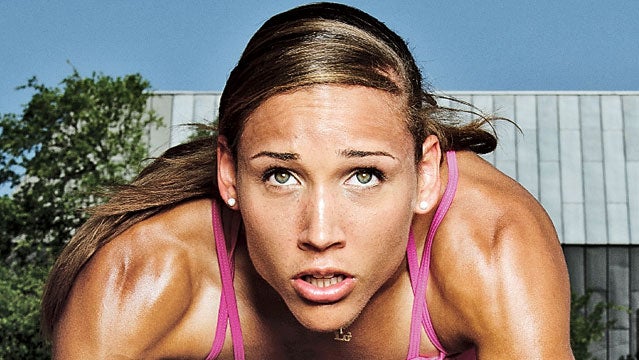When sports psychologist Sean McCann started working for the 21 years ago, he faced a hard sell to coaches and administrators. “We used to have to justify why it’d be a good idea to work on sports psychology,” he says. Now organizations from the NFL to the NCAA have guys like McCann on staff, and pro athletes have their sports therapists on speed dial. Case in point: hurdler Lolo Jones’ mental coach held the top spot in her phone—ahead of her pastor and her mother—before she competed in the 2012 Olympic trials.
There’s a reason. In competitive sports, being mentally prepared is every bit as important as being physically fit. Sports psychologists typically work with athletes on issues like reducing performance anxiety (thanks to the profession, anxious athletes are no longer perceived as chokers) and dealing with the unexpected, unwanted downtime due to an injury. And those services are no longer just for the pros. “A fair number of our athletes are amateurs—triathletes, golfers, runners,” says Christopher Carr, a sports psychologist at in Indianapolis. “If you view athletic participation as a serious endeavor, are investing your time and resources, and have the motivation to excel in your activity, you could be aided by a sports psychologist.” A future afraid of swimming with 2,000 other people, for example, is a perfect candidate. So is a cyclist or skier anxious about getting in the saddle again after a bad crash. Even a runner who always seems to perform better in practice than in competition is ripe for some couch time. Just don’t expect a quick transformation. “Sports psychology doesn’t replace the physical and technical work you need to do,” McCann says. But it will help. And here’s your first session for free: spend 20 to 30 minutes a day with these four tips for a mental performance boost.
1. RELAX
Anxiety is the primary reason athletes seek Carr’s help. “It can enhance performance to a point, but then it can become a distraction,” he says. To combat it, figure out what helps you relax. Music is a great starting point; practice winding down with tunes a few times a week for two or three months. Carr says instrumental music with calm rhythms—New Age, classical, film scores—often work best. But use whatever does the trick for you. Prefer another approach? Try doing progressive muscle relaxation by tensing each muscle for five seconds and then relaxing it. Start with your forehead and end with your toes.
2. SET GOALS
“If you’re not good at goal setting, you’ll probably mess up your event,” McCann says. Without a way to measure and celebrate progress, athletes tend to slack off, overtrain, or get frustrated. “Effective goal setting emphasizes process over outcome,” Carr says. If you want to complete your first marathon (outcome), set daily, weekly, and monthly training goals (process) to get you there. A daily goal may be as specific as running at a certain pace for a particular distance, while a weekly goal might be running three miles more than the week before. “Write down your goals, and keep them specific, measurable, and challenging,” Carr says. If you’re having trouble achieving them, they may be too big or set too far in the future.
3. VISUALIZE
“Being able to use your mind to paint a picture of what you want to do and to solve problems ahead of time is an incredibly valuable skill,” McCann says. Visualizing your race—and any problems you may encounter—will make you better prepared to handle whatever the day throws at you. If your 10K has a climb, for instance, “visualize feeling strong, breathing easily, and conquering the hill,” Carr says. If you’re worried about getting a flat in a triathlon or a century ride, picture yourself fixing the tube calmly and confidently. “The key is to create a scenario where you see yourself performing at an optimal level,” Carr says. Stay positive. Instead of telling yourself “I don’t feel the pain,” say “I feel fresh and fast.”
4. ESTABLISH A ROUTINE
“It’s important to have a mental plan when you’re getting ready to train or compete,” Carr says. Just like a pilot has a preflight checklist, you should make a pre-race to-do list, which can include stretching, visualization techniques, and positive self-talk. Ticking off items will help quash anxiety and instill confidence that you’re ready to fly when the gun goes off. A cyclist’s checklist may have a section for gear and phrases to concentrate on: “smooth pedal strokes,” “strong legs,” “breathe.”
CAVEAT MENTOR
Before you seek our personalized guidance, beware that anyone can call themselves a mental coach, so look for a licensed sports psychologist. (To find a consultant certified by the Association for Applied Sport Psychology, go to .)


